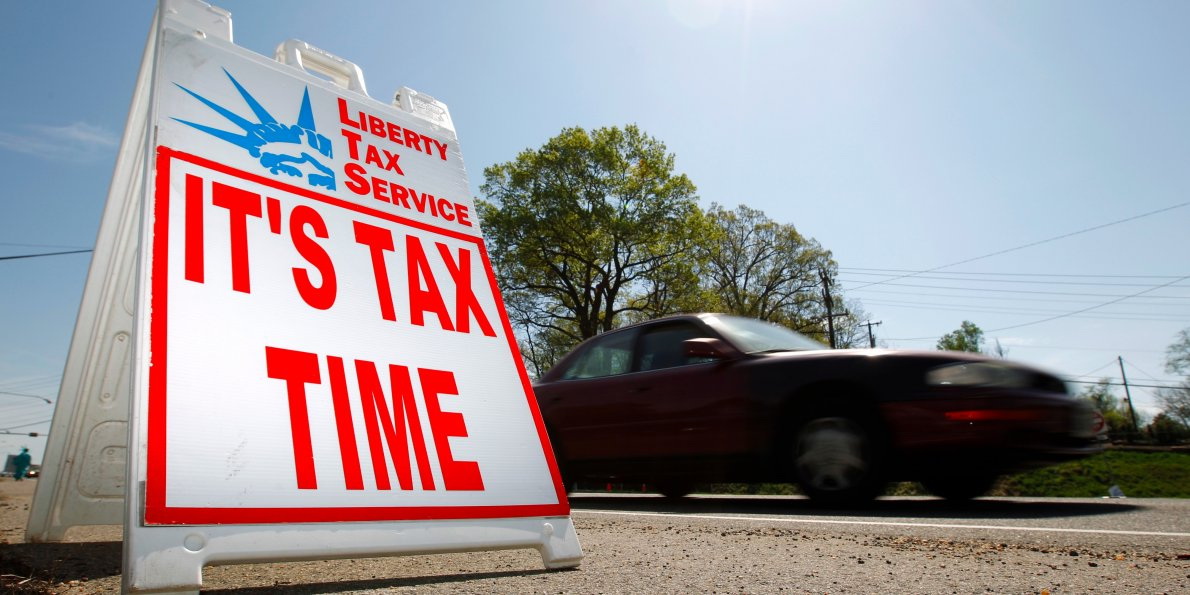Almost everyone has an interest in tax, in whatever form it is named and collected, because almost everyone believes that he or she pays too much, but conversely doesn’t reap enough benefit from the authorities which are managing the collection of taxes, and the distribution of the revenue – in someway the whole system is unfair, isn’t it?
Tax may be an onerous burden to the individual, and to companies, all striving hard to ‘get ahead’ but constantly frustrated by government which thinks it knows best how to spend your hard-earned money, and so takes it from you. However, maybe you aren’t as hard-done-by as those in other countries around the world. True, some people earn so little that paying income tax simply doesn’t happen, and in a few countries the government owns the major producers of wealth so taxes are virtually non-existent, so how does your situation compare with similar countries around the world?
[one_half]
[/one_half][one_half_last]
The Organisation for Economic Co-operation and Development(OECD) has a method of calculating just how much each country collects in all forms of taxation, and what percentage of the country’s Gross Domestic Product(GDP) this represents. Of course this begs several questions – is the country overall so wealthy that the percentage of taxes paid is easily affordable; if taxes are low, does the government own public companies, the profits from which cover public expenses; is average income so low or production so little that there is effectively nothing to tax; or does the security situation make tax collecting just too difficult?
[/one_half_last]
[one_half]
[/one_half][one_half_last]
Comparing the quality, and standard of living with the level of total taxation in each country would also be interesting* – unavailable for countries in the second list – so below is a list of the 20 countries which rely on the highest percentage of taxation from all sources in contributing to the GDP, and the 20 lowest taxing countries, with the second column their indexed quality of life. As always with such statistics, there are some very interesting and surprising results.
The average level of taxation for all OECD countries is 34.8% of GDP, and for EU countries 35.7%.
[/one_half_last]
[one_fifth]Countries with Highest Percentage of Taxation[/one_fifth][one_fifth]Tax as a
% of GDP[/one_fifth][one_fifth]Quality Of Life[/one_fifth][one_fifth]Countries with Lowest Percentage of Taxation[/one_fifth][one_fifth_last]Tax as a
% of GDP[/one_fifth_last]
[one_fifth]20.Spain[/one_fifth][one_fifth]37.3[/one_fifth][one_fifth]186.41[/one_fifth][one_fifth]20.Guinea[/one_fifth][one_fifth_last]9.2[/one_fifth_last]
[one_fifth]19.UK[/one_fifth][one_fifth]38.9[/one_fifth][one_fifth]180.25[/one_fifth][one_fifth]19.Cambodia[/one_fifth][one_fifth_last]8.0[/one_fifth_last]
[one_fifth]18.Hungary[/one_fifth][one_fifth]39.1[/one_fifth][one_fifth]-[/one_fifth][one_fifth]18.Algeria[/one_fifth][one_fifth_last]7.7[/one_fifth_last]
[one_fifth]17.Cyprus[/one_fifth][one_fifth]39.2[/one_fifth][one_fifth]-[/one_fifth][one_fifth]17.Yemen[/one_fifth][one_fifth_last]7.1[/one_fifth_last]
[one_fifth]16.Slovenia[/one_fifth][one_fifth]39.3[/one_fifth][one_fifth]-[/one_fifth][one_fifth]16.Afghanistan[/one_fifth][one_fifth_last]6.4[/one_fifth_last]
[one_fifth]15.Netherlands[/one_fifth][one_fifth]39.8[/one_fifth][one_fifth]192.4[/one_fifth][one_fifth]15.Sudan[/one_fifth][one_fifth_last]6.3[/one_fifth_last]
[one_fifth]14.Swaziland[/one_fifth][one_fifth]39.8[/one_fifth][one_fifth]-[/one_fifth][one_fifth]14.Nigeria[/one_fifth][one_fifth_last]6.1[/one_fifth_last]
[one_fifth]13.Iceland[/one_fifth][one_fifth]44.4[/one_fifth][one_fifth]-[/one_fifth][one_fifth]12.Iran[/one_fifth][one_fifth_last]6.1[/one_fifth_last]
[one_fifth]12.Germany[/one_fifth][one_fifth]40.6[/one_fifth][one_fifth]199.7[/one_fifth][one_fifth]12.DR Congo[/one_fifth][one_fifth_last]5.9[/one_fifth_last]
[one_fifth]11.Bosnia-Herz[/one_fifth][one_fifth]41.2[/one_fifth][one_fifth]-[/one_fifth][one_fifth]11.Angola[/one_fifth][one_fifth_last]5.7[/one_fifth_last]
[one_fifth]10.Italy[/one_fifth][one_fifth]42.6[/one_fifth][one_fifth]-[/one_fifth][one_fifth]10.Saudi Arabia[/one_fifth][one_fifth_last]5.3[/one_fifth_last]
[one_fifth]9.Lesotho[/one_fifth][one_fifth]42.9[/one_fifth][one_fifth]-[/one_fifth][one_fifth]9.Myanmar[/one_fifth][one_fifth_last]4.9[/one_fifth_last]
[one_fifth]8.Austria[/one_fifth][one_fifth]43.4[/one_fifth][one_fifth]192.4[/one_fifth][one_fifth]8.Bahrain[/one_fifth][one_fifth_last]4.8[/one_fifth_last]
[one_fifth]6.Finland[/one_fifth][one_fifth]43.6[/one_fifth][one_fifth]184.01[/one_fifth][one_fifth]7.Chad[/one_fifth][one_fifth_last]4.2[/one_fifth_last]
[one_fifth]6.Norway[/one_fifth][one_fifth]43.6[/one_fifth][one_fifth]188.9[/one_fifth][one_fifth]6.Libya[/one_fifth][one_fifth_last]2.7[/one_fifth_last]
[one_fifth]5.France[/one_fifth][one_fifth]44.6[/one_fifth][one_fifth]173.56[/one_fifth][one_fifth]5.Qatar[/one_fifth][one_fifth_last]2.2[/one_fifth_last]
[one_fifth]4.Cuba[/one_fifth][one_fifth]44.8[/one_fifth][one_fifth]-[/one_fifth][one_fifth]4.Oman[/one_fifth][one_fifth_last]2.0[/one_fifth_last]
[one_fifth]3.Belgium[/one_fifth][one_fifth]45.4[/one_fifth][one_fifth]162.49[/one_fifth][one_fifth]3.Equatorial Guinea[/one_fifth][one_fifth_last]1.7[/one_fifth_last]
[one_fifth]2.Sweden[/one_fifth][one_fifth]45.8[/one_fifth][one_fifth]185.81[/one_fifth][one_fifth]2.Kuwait[/one_fifth][one_fifth_last]1.5[/one_fifth_last]
[one_fifth]1.Denmark[/one_fifth][one_fifth]49.1[/one_fifth][one_fifth]206.49[/one_fifth][one_fifth]1.UAE[/one_fifth][one_fifth_last]1.4[/one_fifth_last]









Leave a Comment